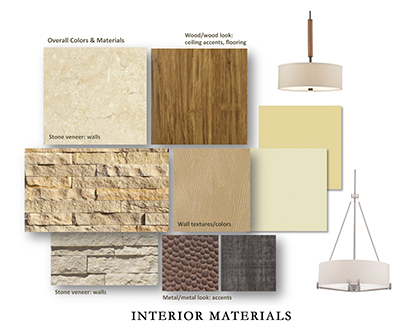Interior architecture and design can support, promote and convey a business’ brand.
Interior Designer Lynn Baker, MS, NCIDQ, of Ascent Architecture & Interiors in Bend has spent her career helping business owners seamlessly integrate their brands into physical locations.
Supported by Ascent’s team of architects and design professionals,Baker has worked on senior living communities, apartment complexes and health-care and veterinary clinics, as well as restaurant and retail buildings and tenant improvements. Before joining Ascent, she specialized in designing dental and orthodontic clinics.
Here she explains the process of “branding” a space to convey business’ values to customers.
Qustion: What is branding, or environment branding, when referring to interior architecture and design?
Lynn Baker: When we’re talking about interiors, the term “branding” means creating an environment that embodies the attributes of a business, so customers recognize and experience your business’ brand when they enter your place of business.
Q: How do color, texture, art, lighting and furniture play a role in interior branding for your clients’ spaces?
LB: We can use colors to literally communicate the brand to our clients’ customers, potential customers, stakeholders, employees and community. An example of environment branding includes repeating colors from your logo in your space. Additionally, we use color to communicate a feeling or quality associated with your brand. If a brand prides itself on being “fun,” for example, a designer might select bright or energetic colors.
We use texture, art, lighting and furniture in the same way. Lighting, in particular, can create an atmosphere that relates to your brand or the experience you wish customers to have while in your space and interfacing with your employees.
Do you want customers to feel energized when they enter your space or feel restful and cocooned? In the first instance you might use more daylight and bright, indirect lighting; in the latter you might have low levels of warm-colored light.
The way customers or employees use the space can also communicate a brand. Movable work spaces, couches and an open environment can suggest a collaborative, creative business, in contrast to a space that’s less flexible and closed-off, which could suggest the importance of privacy, confidentiality, trust and security.
Q: What is a national corporate branded environment example people might recognize?
LB: Google is a company that famously communicates its “fun and playful” brand identity into its interior by using the brand’s multiple colors and showcasing unique design features, such as an indoor slide or mini-golf course.
Q: Is environment branding done before, after or in collaboration with the marketing professionals responsible for a company’s overall corporate branding strategy?
LB: Interior branding can be done in any of these ways. If a company has not yet hired a marketing professional, it’s helpful if the client has an idea of what makes their product or service unique. We can then work with the client to identify these qualities and create an interior environment to reinforce them. A marketing professional can then build upon this base.
Working in collaboration with marketing professionals can make the interior branding very successful. The marketing professional and interior designer can share their opinions about the other’s work and ensure the client understands and is happy with everything the brand and interior are communicating. When necessary, at Ascent Architecture & Interiors we work with a contracted graphic designer to help clients select logos and corporate colors. This additional service for our client helps expedite signage procurement and also influences the exterior architecture of our projects, as well well as the interiors.
Q: Step-by-step, what is the process of branding an interior environment?
LB: First, we want to hear the client’s initial ideas for a project—this might give us ideas about their philosophy and what’s important to them, both functionally and aesthetically. At this point, I also look at a client’s website and any existing printed collateral, such as brochures or flyers, to determine if they have branding in place that will be essential to incorporate in the interior design.
Next, we create an inspiration board that illustrates the brand attributes through interior design—it might contain descriptive words, photos of other interiors, colors, art, and design features. The client then gives me feedback on what they do or don’t like about the board.
From there, our team begins drawing the design features, and selects colors, lighting, artwork and furniture that are similar to the items displayed on the inspiration board. We meet with the client during each of these steps to get their input and make changes, if necessary.
Q: What positive impact can interior design branding have on your clients’ businesses?
LB: I think it can reinforce the qualities of their products and service for the customer. Not branding an interior space can cause confusion or doubt for a customer, and even for the employees, especially if your website or work is known for a certain quality, and then your interior environment contradicts it. When a customer visits a properly branded space, they will make a positive judgment about the business, possibly prior to knowing anything about your work or product.
To learn more how your brand can better influence your place of business, contact Ascent Architecture & Interiors for a complimentary interior architecture and design consultation.
920 NW Bond St #204, Bend, OR 97701
541-647-5675
www.ascent-architecture.com




